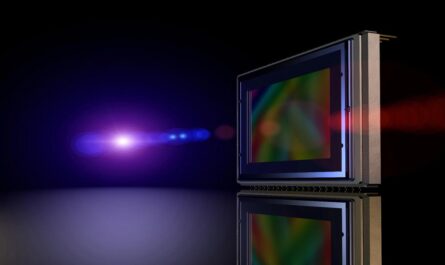Power MOSFET:
The power MOSFET (Metal-oxide-semiconductor field-effect transistor) is one of the most important and widely used semiconductor device today. It has enabled the development of efficient power management and control systems across a wide range of applications from computers, telecommunications to automotive industry. This article aims to provide a basic understanding of power MOSFET including its working principle, key parameters and applications.
Working principle of power MOSFET
A MOSFET operates as a switch that is either fully on or fully off depending on the voltage applied to its gate terminal with respect to its source. When a positive voltage is applied above the threshold voltage, it allows current to flow between its drain and source terminals like a closed switch. Conversely, when it is below the threshold voltage, there is no current flow and it acts like an open switch.
Unlike bipolar transistors, power MOSFETs are majority carrier devices which means they conduct by depletion of charges rather than injection of charges. This allows power MOSFETs to switch much faster than bipolar transistors. Another key advantage is that power MOSFETs require very little gate current to turn on and off, which improves their power efficiency significantly.
The working of a power MOSFET can be understood with an N-channel enhancement type MOSFET. It consists of a P-type substrate with an N-type drain and source regions implanted on its surface. A thin layer of silicon dioxide insulates the gate from the channel region between drain and source. By applying a voltage above the threshold to the gate terminal, an inversion layer of electrons is induced in the P-type substrate forming a channel connecting the source and drain regions. This allows current to flow.
Key power MOSFET parameters
There are several important electrical parameters that determine the performance and specifications of a power MOSFET:
– Breakdown voltage (VDS) – Maximum drain to source voltage that can be blocked when device is off. Higher the better.
– On-resistance (RDS(on)) – Resistance between drain and source when device is fully on. Lower the better.
– Threshold voltage (VTH) – Minimum gate voltage required to turn the device on.
– Gate charge (Qg) – Amount of charge required to turn the device on and off. Lower the better.
– Switching time – Time to turn the device fully on or off. Faster the better.
– Safe operating area (SOA) – Maximum voltage and current limits inside which device can operate safely without damage.
By carefully balancing these parameters, power MOSFETs can deliver optimized performance for various power electronics applications.
Applications of power MOSFETs
Due to their fast switching speed, high efficiency and robustness, power MOSFETs have become indispensable in power electronics and are used across a wide range of applications. Here are some common examples:
– Switch mode power supplies – Almost all AC/DC adapters, battery chargers use buck, boost and buck-boost converter topologies utilizing power MOSFETs as high frequency switches.
– Motor drive control – Applications like brushless DC motors, induction motors employ MOSFET based inverters to efficiently control motor speed and direction.
– Automotive electrical systems – From ignition systems, electric fuel pumps to electric power steering – modern vehicles contain dozens of MOSFET based switching regulators and drivers.
– Renewable energy electronics – Photovoltaic (solar) inverters, wind turbine speed controllers leverage high speed switching of power MOSFET IGBTs.
– Appliances – Washing machines, refrigerators contain multiple MOSFET switched DC-DC converters to manage different voltage rails efficiently.
– LED lighting – Almost all commercial and industrial LED lighting modules employ power MOSFET constant current sinks to drive the LEDs.
New advancements in power MOSFETs
With continuous research and development, power MOSFET technology is continuously evolving with new materials and manufacturing processes. A few notable recent advancements include:
– Gallium Nitride (GaN) MOSFETs – GaN has a wider bandgap than silicon enabling higher voltages, switching frequencies and power densities. This is poised to revolutionize high power applications above 600V.
– Silicon Carbide (SiC) MOSFETs – SiC MOSFETs offer lower losses and operate at much higher temperatures than silicon equivalents. SiC is very relevant for electric vehicles, renewable energy converters and industrial motor control.
– Trench MOSFETs – Using trench gate structure instead of planar gates reduces channel resistance and gate charge significantly. This allows faster switching at lower voltages.
– Integrated circuits – Combining high/low side driver transistors along with protection and control logic into single package further shrinks form factors.
– Automotive qualified MOSFETs – With stringent AEC-Q101 qualification, MOSFETs are now reliable for under-hood automotive environments up to 150°C.
The power MOSFET has truly transformed power electronics and modern energy systems owing to its versatile high speed switching capabilities. Their continual advancement is enabling higher system efficiencies through higher power densities, frequencies and temperatures. Power MOSFETs will continue moving applications towards more efficient, compact and robust solutions across various industries.
Note:
1. Source: Coherent Market Insights, Public sources, Desk research
2. We have leveraged AI tools to mine information and compile it




